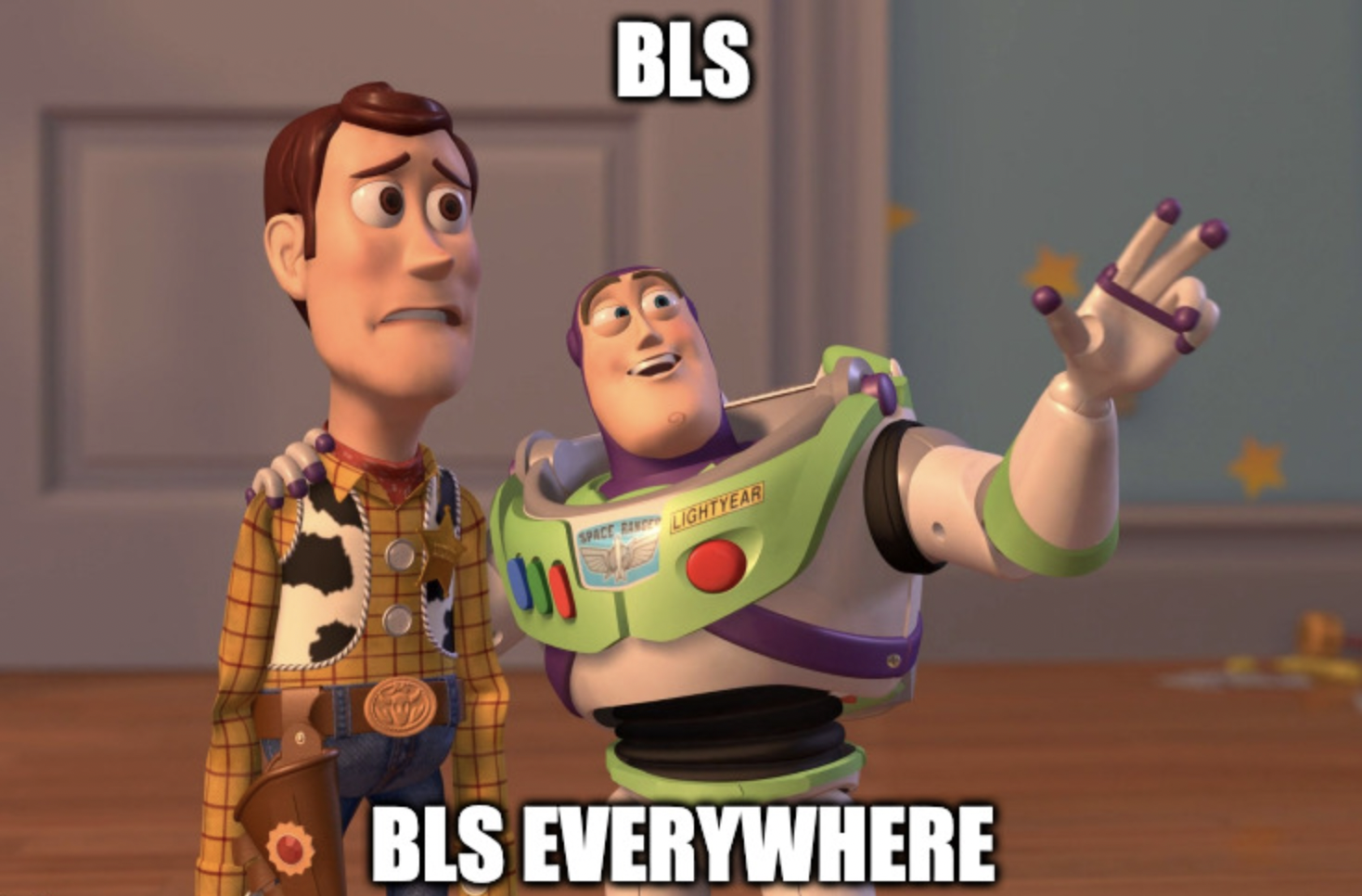
[ad_1]
Earlier this 12 months, we launched a bug bounty program centered on discovering points within the beacon chain specification, and/or in shopper implementations (Lighthouse, Nimbus, Teku, Prysm and many others…). The outcomes (and vulnerability reviews) have been enlightening as have the teachings discovered whereas patching potential points.
On this new sequence, we intention to discover and share a number of the perception we have gained from safety work thus far and as we transfer ahead.
This primary publish will analyze a number of the submissions particularly concentrating on BLS primitives.
Disclaimer: All bugs talked about on this publish have been already fastened.
BLS is in all places

A couple of years in the past, Diego F. Aranha gave a chat on the twenty first Workshop on Elliptic Curve Cryptography with the title: Pairings will not be useless, simply resting. How prophetic.
Right here we’re in 2021, and pairings are one of many major actors behind most of the cryptographic primitives used within the blockchain area (and past): BLS combination signatures, ZK-SNARKS programs, and many others.
Growth and standardization work associated to BLS signatures has been an ongoing challenge for EF researchers for some time now, pushed in-part by Justin Drake and summarized in a latest publish of his on reddit.
The most recent and best
Within the meantime, there have been loads of updates. BLS12-381 is now universally acknowledged as the pairing curve for use given our current data.
Three completely different IRTF drafts are at present below growth:
Furthermore, the beacon chain specification has matured and is already partially deployed. As talked about above, BLS signatures are an essential piece of the puzzle behind proof-of-stake (PoS) and the beacon chain.
Latest classes discovered
After amassing submissions concentrating on the BLS primitives used within the consensus-layer, we’re capable of cut up reported bugs into three areas:
- IRTF draft oversights
- Implementation errors
- IRTF draft implementation violations
Let’s zoom into every part.
IRTF draft oversights
One of many reporters, (Nguyen Thoi Minh Quan), discovered discrepancies within the IRTF draft, and revealed two white papers with findings:
Whereas the particular inconsistencies are nonetheless topic for debate, he discovered some attention-grabbing implementation points whereas conducting his analysis.
Implementation errors
Guido Vranken was capable of uncover a number of “little” points in BLST utilizing differential fuzzing. See examples of these under:
He topped this off with discovery of a reasonable vulnerability affecting the BLST’s blst_fp_eucl_inverse operate.
IRTF draft implementation violations
A 3rd class of bug was associated to IRTF draft implementation violations. The primary one affected the Prysm shopper.
So as to describe this we want first to offer a little bit of background. The BLS signatures IRTF draft consists of 3 schemes:
- Primary scheme
- Message augmentation
- Proof of possession
The Prysm shopper does not make any distinction between the three in its API, which is exclusive amongst implementations (e.g. py_ecc). One peculiarity in regards to the primary scheme is quoting verbatim: ‘This operate first ensures that every one messages are distinct’ . This was not ensured within the AggregateVerify operate. Prysm fastened this discrepancy by deprecating the utilization of AggregateVerify (which isn’t used wherever within the beacon chain specification).
A second challenge impacted py_ecc. On this case, the serialization course of described within the ZCash BLS12-381 specification that shops integers are at all times throughout the vary of [0, p – 1]. The py_ecc implementation did this test for the G2 group of BLS12-381 just for the actual half however didn’t carry out the modulus operation for the imaginary half. The problem was fastened with the next pull request: Inadequate Validation on decompress_G2 Deserialization in py_ecc.
Wrapping up
As we speak, we took a take a look at the BLS associated reviews we’ve acquired as a part of our bug bounty program, however that is positively not the top of the story for safety work or for adventures associated to BLS.
We strongly encourage you to assist make sure the consensus-layer continues to develop safer over time. With that, we glance ahead listening to from you and encourage you to DIG! For those who suppose you’ve got discovered a safety vulnerability or any bug associated to the beacon chain or associated purchasers, submit a bug report! 💜🦄
[ad_2]